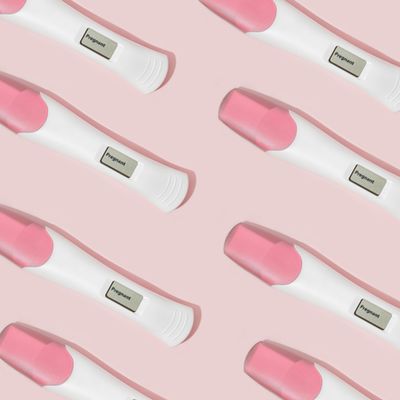
What You Need To Know About Fertility Testing
First, if you want to get a fertility test, when is the best time to do this? How long should you try for before getting a test?
“It takes on average eight to 12 months to have a baby so, if you’re young and have no underlying health issues, it may be worth waiting to reach the 12-month mark, although that’s easier said than done. If you are over 35 then it could be worth testing sooner to make sure everything is working and not waste time. Some women choose to do a test ‘just to see’, which is fine, but there will always be a result and it’s important to think about what you would do with the answer. If it’s not what you’d hoped for, are you in a position to start trying for a baby straight away? Some women find the test useful when they are thinking of having a baby to help determine how long they should try to conceive naturally. Others use it as an indicator to help decide whether to have IVF. If your test results aren’t such good news, you may need support interpreting the results and planning the way forward. For some women it may be appropriate to consider prioritising planning pregnancy or even moving to a more assisted route sooner rather than later.” – Zita West, fertility expert and founder of the Zita West Clinic
Can you get tested while taking hormonal contraception?
“You can get tested and have accurate results when you’re on the pill, as it’s testing your anti-Mullerian hormone (AMH) level as well as a scan of your ovaries. However, there have been some studies to suggest that some people’s results are lower than they really are when testing is done in this way. Ideally, wait at least one cycle after coming off the pill before testing for the most accurate results.” – Zita
Is there an age at which it’s best to get tested?
“If you are considering having a baby and want to know where your fertility lies, then by all means take a test, but if you get a poor result and weren’t feeling completely ‘ready’, then that can add extra pressure to trying for a baby. The most significant factor by far is your age. Older women will have more chromosomally abnormal eggs and therefore an increased risk of miscarriage. A younger woman with a low AMH level is likely to have a much better fertility potential than an older woman with a higher AMH level – the egg quality being the key issue. My top advice? As soon as you start to think you may want a baby, start trying, as it can take up to a year to conceive, especially given how common miscarriages are. If you are doing everything by the book and are under 35, then it may be worth looking into testing after six months or so for peace of mind.” – Zita
“A fertility test can be done at any time, but it could be worth getting tested before you’ve started trying if you are over the age of 40 or have a history of pelvic inflammatory disease, endometriosis, fibroids or an irregular menstrual cycle.” – Dr Alison Taylor, consultant gynaecologist and subspecialist in assisted conception and reproductive medicine at The Lister Fertility Clinic
What does a fertility check involve?
“A female fertility test involves an AMH test to assess your ovarian reserve, which gives an indication of your fertility potential. AMH is a hormone produced by the antral (resting) follicles in the ovaries which diminishes as a woman ages, so the better this result, the better chances of conception. It is a blood test that can be taken at any time of the menstrual cycle. However it is only one factor and won’t tell you if there are any other underlying factors, such as the quality of your eggs. Women who have polycystic ovaries may have a very high reading as the cysts produce an excess of AMH, so this test is not suitable to assess future fertility in this regard. We would also do an ultrasound scan to check your antral follicle count. Antral follicles are small resting follicles on the ovary, around two to eight millimetres in diameter. Used in combination with an AMH test, an antral follicle count is an even more reliable way of estimating your ovarian reserve. It also provides a useful indication of how well you are likely to respond to IVF treatment.” – Zita
“At the Lister Fertility Clinic, our Fit for Fertility check involves various tests. We will investigate your medical history, check your BMI, do an AMH blood test, and carry out an antral follicle count via a scan as well as a transvaginal scan. We will also check your thyroid function, which can impact on cycle regularity, fertility and affect miscarriage risk. We then provide a summary report which offers a detailed explanation of your results and any recommendations.” – Alison
What about a fertility check for him – what does this involve?
“The main test for him is a semen analysis, and it’s amazing how often this is overlooked considering 50% of fertility issues are on the male side. A semen analysis looks at three factors: sperm count (over 15 million is considered normal); motility (we would be happy with 40% of sperm having progressive motility); and morphology, which analyses the shape of the sperm’s head, neck and tail. Morphology can affect any of these three parts, so for a sperm to be considered normal they must be normally shaped.” – Zita
How often do these tests flag that something isn’t right?
“The tests can flag issues with low sperm counts, low ovarian egg reserves and other pelvic pathology such as endometriosis and fibroids. The tests give couples or individuals the opportunity to discuss these findings and other investigations that may be needed, and how the particular issue might (or might not) have an impact on the chances of natural conception and the chances of conceiving through assisted conception. It may also be a pointer not to leave trying naturally for as long as some couples had initially thought.” – Alison
“It’s a complex situation, and the numbers you get back won’t reflect the whole situation. Nutrition, stress and lifestyle all play a huge role in fertility and there is so much that can be done to increase your chances if you look at it in a holistic way. If your tests come back showing very poor sperm results or extremely low AMH and egg reserves, it may be worth looking at assisted fertility sooner. This doesn’t mean going straight to IVF though, there other options that can be looked at before going down this route. It’s also important to note that even if your tests come back with the all-clear for both of you, it’s still possible that you might struggle to conceive. This can be down to all sorts of things, most of which are fixable. Whether it’s losing or gaining weight, cutting out processed foods, trying hypnotherapy or acupuncture – many things can help.” – Zita
Who is the typical person getting a fertility test?
“The average woman who comes to the clinic for a fertility test is thinking about starting a family, and perhaps wondering how long they have until they have to seriously consider it. Lots of our patients are also single women in their late 30s and early 40s who want to know the state of their fertility.” – Zita
What about further testing – what are your options?
“This will depend on your medical history, whether you are trying and what you want to investigate. Tubal assessment by HyCoSy scan, laparoscopy and hysteroscopy provide a more in-depth look at the pelvis, for example, and are commonly used if there is a specific problem that might need treatment such as symptomatic endometriosis, large ovarian cysts and clinically significant fibroids that are distorting the shape of the uterine cavity. We can also check ovulation with scans and blood tests for progesterone.” – Alison
Finally – how can you prepare for your results if you are anxious?
“Although it can be nerve-racking waiting for test results, remember it’s a proactive step to take to find out whether everything is normal and as expected for your age. If the results aren’t as positive as you had hoped, it gives you the opportunity to rethink your priorities about when you want to try and what options might be available in the meantime, such as egg freezing. The Lister Fertility Clinic has a team of trained counsellors to provide support – this service is provided free of charge.” – Alison
Pricing for a fertility test at the Zita West clinic starts from £110. A Fit For Fertility test at The Lister Fertility Clinic costs £495 for the female test, £295 for the male test or £595 per couple. For more information visit ListerFertility.co.uk and ZitaWestClinic.com
DISCLAIMER: Features published by SheerLuxe are not intended to treat, diagnose, cure or prevent any disease. Always seek the advice of your GP or another qualified healthcare provider for any questions you have regarding a medical condition, and before undertaking any diet, exercise or other health-related programme.
INSPIRATION CREDITS: JEREMY PAWLOWSKI/ STOCKSY UNTED
DISCLAIMER: We endeavour to always credit the correct original source of every image we use. If you think a credit may be incorrect, please contact us at info@sheerluxe.com.


